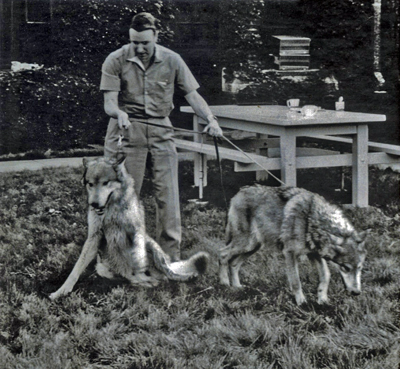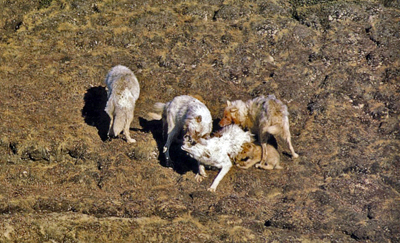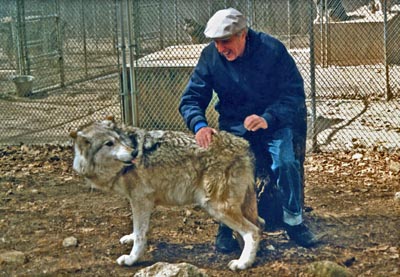From the Editor
Passage - Siu-Ling Han
Passage - Benson E. Ginsburg
Building & Testing Astrup's Dog Sled
The Arctic Nomads Project
Zacharias Kunuk’s Latest Film
The Chinook Project’s 2016 Wellness Clinics in Canada’s North
Canadian Inuit Dogs I have owned, raised and trained: a photo essay; Part 4
Book Review: Padlei Diary
Index: Volume 18, The Fan Hitch
Navigating This Site
Index of articles by subject
Index of back issues by volume number
Search The Fan Hitch
Articles to download and print
Ordering Ken MacRury's Thesis
Our comprehensive list of resources
Defining the Inuit Dog
Talk to The Fan Hitch
The Fan Hitch home page
Editor: Sue Hamilton
Webmaster: Mark Hamilton
The Fan Hitch, Journal
of the Inuit Sled Dog, is published four
times a year. It is available at no cost
online at: https://thefanhitch.org.
The Fan Hitch welcomes your letters, stories, comments and suggestions. The editorial staff reserves the right to edit submissions used for publication.
Contents of The Fan Hitch are protected by international copyright laws. No photo, drawing or text may be reproduced in any form without written consent. Webmasters please note: written consent is necessary before linking this site to yours! Please forward requests to Sue Hamilton, 55 Town Line Rd., Harwinton, Connecticut 06791, USA or mail@thefanhitch.org.
This site is dedicated to the Inuit Dog as well as related Inuit culture and traditions. It is also home to The Fan Hitch, Journal of the Inuit Sled Dog.
The Fan Hitch welcomes your letters, stories, comments and suggestions. The editorial staff reserves the right to edit submissions used for publication.
Contents of The Fan Hitch are protected by international copyright laws. No photo, drawing or text may be reproduced in any form without written consent. Webmasters please note: written consent is necessary before linking this site to yours! Please forward requests to Sue Hamilton, 55 Town Line Rd., Harwinton, Connecticut 06791, USA or mail@thefanhitch.org.
This site is dedicated to the Inuit Dog as well as related Inuit culture and traditions. It is also home to The Fan Hitch, Journal of the Inuit Sled Dog.

Taken in the wolf yard at the University of Chicago for an article about Ginsburg’s
work in a September 14,1962 Time magazine story, entitled “Man Bites Wolf”
photo: Archie Lieberman
The Man Who Knew Canids
Benson E. Ginsburg
July 16, 1918 – August 17, 2016
by Sue Hamilton
You may not have heard the name Benson E. Ginsburg. Perhaps longtime followers of this journal may recall reading his explanation of buffering genes or his polite but scathing reply in the March 2004 issue of The Fan Hitch to a Nova TV special, Dogs and More Dogs, featuring Ray Coppinger and his post-documentary online chat expounding preposterous views on the authenticity (“purity”) of any dog, including the Inuit Dog (as an aboriginal landrace).Six degrees of separation is the theory that everyone and everything are six or fewer steps away, by way of introduction, from any other person in the world, so that a chain of "a friend of a friend" statements can be made to connect any two people in a maximum of six steps. It was originally set out by Hungarian author, playwright, poet, journalist, and translator Frigyes Karinthy, in his 1929 short story, Chains (Láncszemek).
Dr. Benson Ginsburg passed away in Storrs, Connecticut on August 17, 2016 at the age of 98. He was a pioneer in the field of behavior genetics. In 1943, he received his PhD in zoology at the University of Chicago where he was an award-winning named professor, until 1968 when he founded the Department of Biobehavioral Sciences at the University of Connecticut in Storrs. Beginning in 1946, he was a Summer Investigator at the Jackson Laboratory in Bar Harbor, Maine where he worked with animal behaviorists and important dog scientists John Paul Scott and John L. Fuller.
Benson Ginsburg is deserving of every superlative found in the Oxford English Dictionary and then some. His persona and life’s work was indeed a gift to the world of humans and mammalian nonhumans alike. For many of us, he will be especially acknowledged for his work on behavior genetics integral to the evolution of wolves, coyotes, and dog domestication.
It is no surprise to have heard it said by all whose paths crossed with Benson – and there were scores of colleagues, students and friends – that he profoundly affected or changed their lives. Mark and I are among them.
For us it would be an oversimplification to acknowledge him merely for facilitating the transfer of socialized Eastern gray wolves (Tewa in 1978, then Miranda in 1986) from the University of Connecticut’s wolf study program – a part of the BioBehavioral Sciences Department – to our kennel. Our first contact with Benson was made in the mid-1970s as a result of biobehavioral research with beagles being conducted by his colleagues at the University of Connecticut Health Center where I worked. From that association came friendly conversations and then the invite in September 1975 and our introduction, without a fence in between us, to the program’s socialized ambassador wolf, Tewa, our first contact with a wild canid. Many more visits followed and friendships deepened, not only with Dr. Ginsburg, but also with his colleagues, staff, students and eventually his family. He made us “lay people” with an interest in dog behavior and predator-prey relationships feel totally welcome and at ease. Although our educational and professional paths were far afield from the study of canine behavior and genetics, being connected as we were to this science thanks to Dr. Ginsburg gave us the experiences, associations and enlightenments that we could not have predicted nor would have been possible!
Twenty-four years after we purchased our first Alaskan Malamute (which began our decades-long history with that breed, primarily for recreational mushing), twenty-one years after Tewa’s first foul-breath, slurpy wet kisses, a decade after the arrival of Miranda, and fourteen years after the first of many, many journeys into the Canadian North, we were finally in a position to bring into our kennel, not another cultured breed dog, but our first aboriginal landrace, authentic working dogs right out of the arctic. That was late August 1996.
Within hours of bringing our first three Inuit Dogs home, we witnessed a magical nexus between wild (Miranda), aboriginal-domestic (Inuit Dog) and cultured - domestic (Alaskan Malamute) canids! For example, it seemed to us (admittedly a subjective observation) that the meaning, strength and understanding of behavioral cues projected and received between wild and aboriginal were not the same as that of wild and cultured, or between the cultured and the aboriginal for that matter. How Miranda responded to threats to her by the new Inuit Dog mothers (both bitches whelped within two weeks of their arrival) did not appear to be the same as when the mothers gave the curious Alaskan Malamutes the “stink eye” and severely curled lips, and in turn how the mothers reacted to each of those responses. Were the reactions based on individual personalities or were they something else, something more rudimentary? We believe we were bearing witness to the genetic behavioral nature of each of the three categories of canid. It was an OH-WOW moment for us!

On Ellesmere Island in the Canadian High Arctic, Alpha Male acknowledges
Scruffy’s submission with a muzzle bite, which seems to consummate the interaction.
Courtesy of Dr. David Mech from The Arctic Wolf: Living with the Pack
An oft-spoken Ginsburg observation was, “Wolves say what they mean and mean what they say; dogs not necessarily.” He believed in the linear expression from the wild (wolf and coyote) to the primitive to the aboriginal and finally to the rest of the (cultured) domestic dog world. One of his PhD students, Alice Moon-Fanelli, explored the inter-world of the truly wild and the cultured canid at Ginsburg’s “Nurturing the Genome” June 2002 Festschrift. Dr. Moon-Fanelli reviewed her PhD thesis project, “The Ontogeny of Expression of Communicative Genes in Coyote–Beagle Hybrids”1. In the “Evolutionary significance of the affective communicative behavior” discussion section of this fascinating study, she says:
“The ability to communicate need and intent is essential for the survival of all living vertebrates. Without the capacity to signal emotional and motivational information, intraspecific aggression could threaten the survival of the species. Well-defined, stereotyped social signals prevent social disruption, permitting the formation and maintenance of socially cohesive groups. Communication also affects the evolutionary direction of social behavior because the transmission of information regarding the needs and intentions of an individual may be adaptive to the group (Buck and Ginsburg 1991).
Buck and Ginsburg (1991) emphasize the importance of communication as the “social cement” from which social behavior has evolved. They divide communication into two components: (1) biologically determined, non-voluntary, non-propositional displays; and (2) communication that is intentional and structured by learning experience. In their model, spontaneous affective communication is defined as non-intentional, non-propositional affective communication about emotions and motives, and its primary function is social coordination. In their view, experience with spontaneous affective communication throughout the course of development results in the formation of affective bonds or affinities from which species-specific behavior systems are derived. These bonds are characteristic of the social system of the species; may be hierarchically structured; and range from the species-typical bonds involved in courtship, mating, parenting, dominance hierarchies and peer coalitions, to the more complex social roles that are required for the formation and maintenance of a socially cohesive group. Defining the evolutionary significance of communication, Buck and Ginsburg (1991) propose “The Communicative Gene Hypothesis” which states that there are “communicative genetic systems at the root of spontaneous affective communication which in turn form the basis of all social behaviors.” These systems involve a genetic coordination of sending and receiving mechanisms.”

On Baffin Island in the Canadian High Arctic, the Inuit Dog on the right has
successfully conveyed his dominance to the dog on the left who clearly
demonstrates his submissiveness. photo: Hamilton
Benson Ginsburg and Laurie Hiestand, who also earned her PhD as his student in Behavioral Genetics, contributed Chapter six (including forty-three wild/domestic canid references) to The Inevitable Bond: Examining scientist-animal interaction2. The editors introduce the “Humanity’s “best friend”: the origins of our inevitable bond with dogs” chapter by saying, “Their focus is on the evolutionary factors that account for the ease with which humans and canids interact.” Ginsburg and Hiestand go onto say:
By way of explaining how morphology, physiology and behavior changes happened:“The acute sensitivity that dogs have to their social environment is not the product of their domestication, although the degree of its expression can be modified by the process; instead it has been inherited from the wild progenitor of the species [the wolf]….If we assume that the modern wolf still has the capacities and characteristics of its ancestral form, what have been the major results of more than 15,000 years of artificial selection? The most obvious changes are seen in the tremendous physical and behavioral variations that characterize present breeds (Stockard, Anderson, & James, 1941; Scott & Fuller, 1945; The American Kennel Club 1989).”
Ginsburg and Hiestand mention how due to human selection, some ancestral behaviors “are retained in varying degrees while others are weakened or lost”.“Three events occurred during domestication that gave rise to the variability we see today: One is the loss of phenotype buffering mechanisms characteristic of wild species, that is, the maintenance of fairly uniform physical characteristics by natural selection; the second is the effect of artificial selection for characteristics of value to humans; and the third is humanity’s preference for the exotic, which has favored and maintained mutations that would otherwise have been lost (Ginsburg 1976a,b).”

Benson and Miranda at the Hamilton’s kennel. photo: Hamilton
The longer we have been involved with Inuit Dogs and have learned about aboriginal dog landraces in general, the more we value the significance behavior genetics plays in understanding all canids, especially the evolution from wild through primitive-aboriginal dogs an on to “cultured” dog breeds. We owe this awareness, in large part, to one man. We cannot help but remain mindful of how either subtly or willfully human interpolations have affected dogs, for better and worse.
You may not have heard the name Benson E. Ginsburg, but know this… owing to his enduring and far-reaching influence of his scientific endeavors, he is a first-rate example of Frigyes Karinthy’s six degrees of separation theory. Ginsburg’s landmark work and teachings in the evolution of canid behavior genetics is being played out in real time whenever we observe, assess or manipulate our dogs.
1The Ontogeny of Expression of Communicative Genes in Coyote–Beagle Hybrids; Moon-Fanelli, A.; Behavior Genetics (2011) 41: 858. doi:10.1007/s10519-011-9452-7.
2The Inevitable Bond: Examining scientist-animal interaction, edited by Hank Davis and Dianne Balfour; 1992; publisher: Press Syndicate of the University of Cambridge; ISBN: 0-521-40510-6 (hardcover).
Ed.: Earnest thanks to Laurie Hiestand, Alice Moon-Fanelli and Dr.Ginsburg’s family for their support in the preparation of this story.